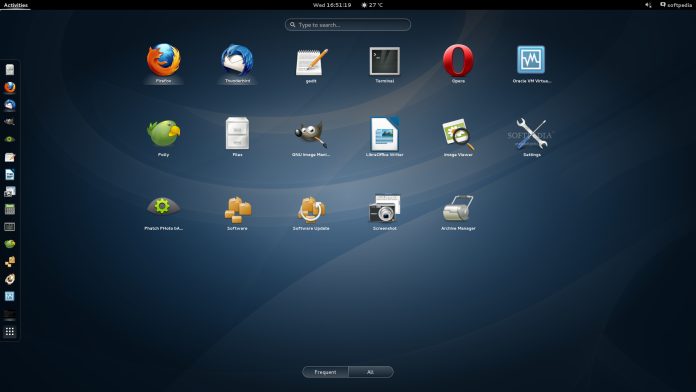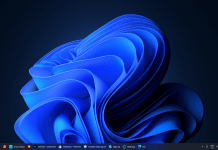Linux is more than just an operating system; it represents a significant evolution in the world of computing. As I explore the origins of Linux, I invite you to join me on a journey through its inception, development, and the philosophies that shaped it.
A Glimpse into the 1990s
To understand how Linux came into being, we need to travel back to the early 1990s. At this time, the computing landscape was dominated by proprietary systems such as Microsoft Windows and Apple’s Macintosh. Many developers were frustrated with the limitations imposed by these closed systems. This frustration set the stage for an open-source revolution, paving the way for the birth of Linux.
The Visionary: Linus Torvalds
The story of Linux begins with a Finnish student named Linus Torvalds. In 1991, while studying at the University of Helsinki, Torvalds started working on a project that would later evolve into what we now know as the Linux kernel. Inspired by the MINIX operating system, which was a simplified version of Unix, Torvalds sought to create a free and open alternative that anyone could use, modify, and distribute.
In August 1991, Torvalds announced his project on the comp.os.minix newsgroup. He described his work as a “hobby” and invited feedback from the community. This humble beginning laid the foundation for what would become a global phenomenon.
The Birth of Open Source
The term “open source” was not widely recognized at the time of Linux’s inception. However, the principles behind open-source software—transparency, collaboration, and freedom—were inherent in Torvalds’s vision. The licensing model he chose for Linux, the GNU General Public License (GPL), would later become a cornerstone of the open-source movement.
The GPL allowed anyone to use, modify, and distribute the software, as long as they maintained the same rights for others. This was revolutionary, as it empowered a community of developers and users to contribute to the project, leading to rapid advancements and improvements.
The First Releases and Community Involvement
The first official release of the Linux kernel, version 0.01, occurred in September 1991. Although it was rudimentary, it marked the beginning of a collaborative effort that would attract programmers from around the world. The community began to grow, and developers started to contribute their code, enhancements, and bug fixes.
As I delve deeper into the early days of Linux, I am struck by the importance of community involvement. Forums and mailing lists became vital platforms for discussion and collaboration. This grassroots movement attracted individuals who shared a common goal: to create a robust and free operating system.
The GNU Project and the Linux Distribution
While Torvalds was developing the kernel, Richard Stallman was working on the GNU (GNU’s Not Unix) Project, which aimed to create a free Unix-like operating system. Although Stallman had designed many essential components, such as compilers and libraries, he was missing a crucial element: a kernel. When Torvalds released Linux, it filled that gap perfectly.
This combination of the GNU tools and the Linux kernel led to the emergence of Linux distributions. A distribution is a complete operating system that includes the Linux kernel along with various software packages. As I explore the various distributions, I find it fascinating how different communities tailored their versions of Linux to meet specific needs. Popular distributions like Debian, Red Hat, and Ubuntu emerged, each with its own strengths and user base.
The Rise of Linux in the Late 1990s
As the 1990s progressed, Linux gained traction among developers and enthusiasts. Its reputation as a reliable and secure operating system grew, particularly in server environments. The open-source model attracted many organizations looking for alternatives to expensive proprietary solutions.
In 1996, the Linux kernel reached version 2.0, which introduced significant improvements, including support for multiple processors. This version solidified Linux’s position as a viable operating system for enterprise applications.
Linux and the Internet Boom
The late 1990s witnessed the dot-com boom, and Linux played a crucial role in powering the internet. Many web servers adopted Linux due to its stability, security, and cost-effectiveness. Companies like IBM recognized the potential of Linux and began investing in its development, further legitimizing it as a serious player in the operating system market.
As we transitioned into the 21st century, Linux’s popularity soared. The open-source community continued to thrive, and the software became a staple for developers, researchers, and businesses alike.
The Philosophical Underpinnings of Linux
One aspect that sets Linux apart from proprietary operating systems is its underlying philosophy. The principles of collaboration, community, and freedom have created a culture that encourages innovation. As I reflect on this, I realize how these values resonate with many users today.
The ethos of “sharing is caring” is deeply embedded in the Linux community. This philosophy fosters an environment where developers can learn from one another and contribute to a collective goal. The result is a constantly evolving operating system that adapts to changing technologies and user needs.
Linux Today: A Global Movement
Today, Linux is not just an operating system; it has become a global movement. It powers everything from personal computers to supercomputers, smartphones, and embedded devices. The versatility of Linux has led to its adoption in various sectors, including education, government, and industry.
I find it inspiring that Linux has become synonymous with innovation. The open-source model has encouraged collaboration among developers from diverse backgrounds, leading to groundbreaking advancements in technology. As I look to the future, I am excited about the potential of Linux and the open-source community to drive further change.
Conclusion
Reflecting on the origins of Linux, I am reminded of the power of community and collaboration in shaping technology. From Linus Torvalds’s initial vision to the vast ecosystem we see today, Linux has come a long way. Its journey underscores the importance of open-source principles and the impact they can have on the world of computing.
As we continue to embrace open-source software, I encourage you to explore Linux and its many distributions. Whether you are a developer, an enthusiast, or just curious about alternative operating systems, there is a place for you in the Linux community. By engaging with this vibrant ecosystem, we can contribute to the ongoing legacy of Linux and the ideals it represents.
<iframe width="560" height="315" src="https://www.youtube.com/embed/s7u7jBwIocU?si=C_JFLFD68BM4SqBG" title="YouTube video player" frameborder="0" allow="accelerometer; autoplay; clipboard-write; encrypted-media; gyroscope; picture-in-picture; web-share" referrerpolicy="strict-origin-when-cross-origin" allowfullscreen></iframe>




.jpg?w=100&resize=100,70&ssl=1)
